Note: 1. To find a certain person click HERE then scroll down (or Ctrl-F and enter the name.)
2. The number after the name is the generation in the Herrick line.
Many cultures believe that the ancestors never die, never lose their connection with the living. That their energy is still there, supporting us, pushing us, loving us. What if, I think, all Americans could look back and claim their past? See their ancestors fully? Know their whole story? Would that change everything?
I’m not a scientist or a historian. I am a storyteller. And I can now see that the stories we find as we discover ourselves don’t just belong to us as individuals. They also belong to the communities of which we are a part. And if those groups are brave, they can use those stories to expand the possibility of who we might all become together.
This history—our history—has sad notes. Like any good love story, it has pain and hurt. But this history also has lifting notes—crescendos—full orchestras that tug at the heart and make it soar.
I thought this search for ancestors might be hard. I thought I would need hands holding mine, rubbing my back, consoling my tears and my heartache. Instead I found strength. And power. And adventure. And camaraderie. I found laughter. Love. Life. Kinship. I found something strong and necessary to root and ground me.
Web page by John Locke Herrick updated 2022- email: Goldplatedshovel@gmail.com
References: 1885 book, it is fascinating reading:
https://babel.hathitrust.org/cgi/pt?id=hvd.hx4wvz&view=1up&seq=1
Also: https://archive.org/details/reportspapersofa19asso/page/198/mode/2up
from Knowltons, 1897 and Lord- Locke 1836

Crest awarded to Sir William Herrick 1598
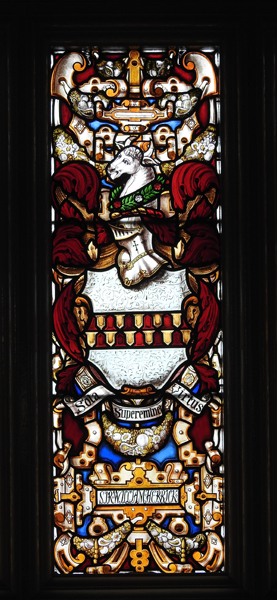
I have read that Eric originally meant “prince”.
Interesting people:
Eric the Forester (grandson? of) Eric the Red, who tried to settle America
Sir William Herrick (Principal Jeweler to the Crown)
Henrie Herrick (came over from England in 1629)
George Herrick (1658-1694) (involved in Salem witch trials)
Joseph Herrick (uncle involved in the Salem Witch Trials 1692)
Captain John Locke (came over from England about 1630 – same epoch as Henrie!)
Lord John Locke (Sheriff of London)
Goda, the Lady Godiva (who never rode naked, as there was no “town square” in Coventry during her lifetime!)
William Austin (carried off by Indians, then married Tecumseh‘s sister)
Mary Iaac (carried of by Indians, renamed Methotsa)
Samuel Wardwell (Hanged as a witch Salem Witch Trials , wife and daughter )
Sarah (Hooper) Wardwell (Condemned to hang as a witch but pardoned Salem Witch Trials )
Details of the Witch Trials


See Ericke for details of the Danes who came here in East Anglia in 865, 10 miles from Beau Manor..
The Name of Herrick
The Herrick name is very old and honorable. Tracing back to the 9th century of English History, this ancient cognomen (surname) has passed through many mutations and variations – Eric, Erik, Erick, Ericke, Irek, Erek, Herik, Hereck, Hericke, Heyricke, Heyrich, Herick, Herrick. Early on the name was just spoken and when scribes started writing names down, they wrote them phonetically.
List of Herrick Generations back to 640
Ancestors from my mother and father:
Locke family tree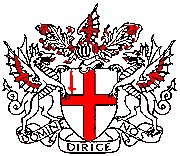 | Weymouth family tree | Wynn family tree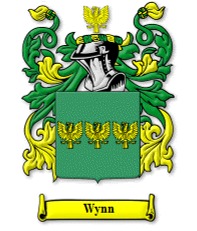 | Crowell family tree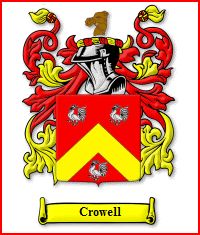 |
List of (Father)LOCKE (Gmother)WEYMOUTH (Aunt)WYNN (Aunt) CROWELL

My mother’s mother was of the Doane family.
List Of HERRICK Names Born In Each Decade:
Note 1: Until 1751, the calendar had the year end on the end of March. The dates herein are given throughout according to the modern computation, i.e. New Style: consequently for the periods from Jan 1 to Mar 25, annually, till 1751, the years are later by one. The old style date would be 13 Feb, 1720 for instance, but the New Style would be 13 Feb, 1721, so the date of birth might now be written 1720/21.
Note 2: The old calendar had the year end on the end of March as noted above. Historically on the first of the new year (April 1) everyone would knock on their neighbor’s door and join in the festivities “ringing in the New Year”. However, when the New Style calendar was adopted, if someone came to the neighbor’s house expecting to celebrate on April 1, they would be met with “April Fool!” instead, hence our expression.
Note 3: Further reading:
The 1752 Calendar Change
Today, Americans are used to a calendar with a “year” based the earth’s rotation around the sun, with “months” having no relationship to the cycles of the moon and New Years Day falling on January 1. However, that system was not adopted in England and its colonies until 1752.
The changes implemented that year have created challenges for historians and genealogists working with early colonial records, since it is sometimes hard to determine whether information was entered according to the then-current English calendar or the “New Style” calendar we use today.
Throughout history there have been numerous attempts to convey time in relation to the sun and moon. Even now the Chinese and Islamic calendars are based on the motion of the moon around the earth, rather than the motion of the earth in relation to the sun, and the Jewish calendar links years to the cycle of the sun and months to the cycle of the moon.
The Julian Calendar
In 45 B.C., Julius Caesar ordered a calendar consisting of twelve months based on a solar year. This calendar employed a cycle of three years of 365 days, followed by a year of 366 days (leap year). When first implemented, the “Julian Calendar” also moved the beginning of the year from March 1 to January 1. However, following the fall of the Roman Empire in the fifth century, the new year was gradually realigned to coincide with Christian festivals until by the seventh century, Christmas Day marked the beginning of the new year in many countries.
By the ninth century, parts of southern Europe began observing first day of the new year on March 25 to coincide with Annunciation Day (the church holiday nine months prior to Christmas celebrating the Angel Gabriel’s revelation to the Virgin Mary that she was to be the mother of the Messiah). The last day of the year was March 24. However, England did not adopt this change in the beginning of the new year until late in the twelfth century.
Because the year began in March, records referring to the “first month” pertain to March; to the second month pertain to April, etc., so that “the 19th of the 12th month” would be February 19. In fact, in Latin, September means seventh month, October means eighth month, November means ninth month, and December means tenth month. Use of numbers, rather than names, of months was especially prevalent in Quaker records.
The Gregorian Calendar
During the Middle Ages, it began to became apparent that the Julian leap year formula had overcompensated for the actual length of a solar year, having added an extra day every 128 years. However, no adjustments were made to compensate. By 1582, seasonal equinoxes were falling 10 days “too early,” and some church holidays, such as Easter, did not always fall in the proper seasons. In that year, Pope Gregory XIII authorized, and most Roman Catholic countries adopted, the “Gregorian” or “New Style” Calendar.” As part of the change, ten days were dropped from the month of October, and the formula for determining leap years was revised so that only years divisible by 400 (e.g., 1600, 2000) at the end of a century would be leap years. January 1 was established as the first day of the new year. Protestant countries, including England and its colonies, not recognizing the authority of the Pope, continued to use the Julian Calendar.
Double Dating
Between 1582 and 1752, not only were two calendars in use in Europe (and in European colonies), but two different starts of the year were in use in England. Although the “Legal” year began on March 25, the use of the Gregorian calendar by other European countries led to January 1 becoming commonly celebrated as “New Year’s Day” and given as the first day of the year in almanacs.
To avoid misinterpretation, both the “Old Style” and “New Style” year was often used in English and colonial records for dates falling between the new New Year (January 1) and old New Year (March 25), a system known as “double dating.” Such dates are usually identified by a slash mark [/] breaking the “Old Style” and “New Style” year, for example, March 19, 1631/2. Occasionally, writers would express the double date with a hyphen, for example, March 19, 1631-32. In general, double dating was more common in civil than church and ecclesiastical records.
Changes of 1752
In accordance with a 1750 act of Parliament, England and its colonies changed calendars in 1752. By that time, the discrepancy between a solar year and the Julian Calendar had grown by an additional day, so that the calendar used in England and its colonies was 11 days out-of-sync with the Gregorian Calendar in use in most other parts of Europe.
England’s calendar change included three major components. The Julian Calendar was replaced by the Gregorian Calendar, changing the formula for calculating leap years. The beginning of the legal new year was moved from March 25 to January 1. Finally, 11 days were dropped from the month of September 1752.
The changeover involved a series of steps:
- December 31, 1750 was followed by January 1, 1750 (under the “Old Style” calendar, December was the 10th month and January the 11th)
- March 24, 1750 was followed by March 25, 1751 (March 25 was the first day of the “Old Style” year)
- December 31, 1751 was followed by January 1, 1752 (the switch from March 25 to January 1 as the first day of the year)
- September 2, 1752 was followed by September 14, 1752 (drop of 11 days to conform to the Gregorian calendar)
Which Calendar Is It?
Out of context, it is sometimes hard to determine whether information in colonial records was entered “Old Style” or “New Style.” Some examples:
In the Public Records of the Colony of Connecticut, “A Corte at New Towne [Hartford] 27 Decr. 1636” is immediately followed by a court held “21 Febr. 1636,” which is followed, in turn, by “A Cort att Hartford, Mrch 28th, 1637”. Although it may first appear that the February session was entered out of sequence, the arrangement is actually correct. Under the “Old Style” calendar and legal new year, 1636 began on March 25. December 1636 was followed by January 1636 and February 1636, and 1636 continued through March 24.
The “Warwick Patent” is dated the “Nineteenth day of March in the Seventh/ yeare of ye reigne of our Sovergne Lord Charles by ye grace of God/ Kinge of England Scotland Ffrance and/ Ireland defender of ye ffaith &c Anno Dom/ 1631.” Although not double dated, the historical context indicates that the date as recorded was “Old Style.” If double dated, it would have been recorded as March 19, 1631/2; if recorded “New Style,” it would be March 19, 1632.
John and Joane Carrington, accused of “familliarity with Sathan the great Enemye of God and mankinde” were indicted by Connecticut’s Particular Court on “6 March 1650/1.” In his “diary” or notebook, Matthew Grant records that they were executed “mar. 19.50.” Although Grant did not employ the double date, had he done so it would have been recorded as March 19, 1650/1.
Although current historical scholarship calls for retention of Old Style dates in transcriptions, historians and genealogists need to be aware that some people living at the time converted the date of an event, such as a birthday, from Old Style to New Style. George Washington, for example, was born on February 11, 1731 under the Julian Calendar, but afterwards recognized the date February 22, 1732 to reflect the Gregorian Calendar.
HERRICK ANCESTRY
(Scroll down for a list.)
640
- Gormo I (1)
680
720
- Boryn (3)
760
- Siward I (4)
800
- Siward II (5)
840
850
- Siward III (7)
880
- Harold VII (8)
900
https://en.wikipedia.org/wiki/Gorm_the_Old
930
- Harold Gormsson VIII (10)
970
1000
- Ericke (12)
1020
- Ericke King (13)
1040
1100
- Eyryk (15)
1125
- Henry Eyryk (16)
1175
- Henry Eyryk (17)
1210
1230
1260
- Henry Eyryk (19)
1290
- John Eyryk (20)
1330
1350
- Sir William Eyryk (22)
1390
- Eyryk (23)
1420
- William Eyryk (24)
1450
- Robert Eyrick (25)
1470
- Thomas Eyricke (26)
1510
1550
- Sir William Herrick (28)
1600
- Henry John Herrick(Heyricke) (29)
1610
1620
1630
1660
1670
1690
1700
1710
1740
- John Herrick (33)
- Mary Iaac(Ice) captured by the Indians, became Methotsa (or Methoataske); married Chief Puckeshenuwau (or Pukeshenwa)
- Jonathan Weymouth
1750
- Josiah Locke
- William Austin
- Tecumapease (or Tecomopeas) (Chief Tecumseh‘s sister)
1760
- James Butt (99b)
- James LaBree
1770
1780
1790
1800
1810
- Joseph Butt (100b)
1820
- Daniel Herrick (35)
1830
1850
James Butt (102b)
1870
1880
1900
1920
1940
1950
- David Alan Herrick (38)
- Donald Butt Herrick (38)
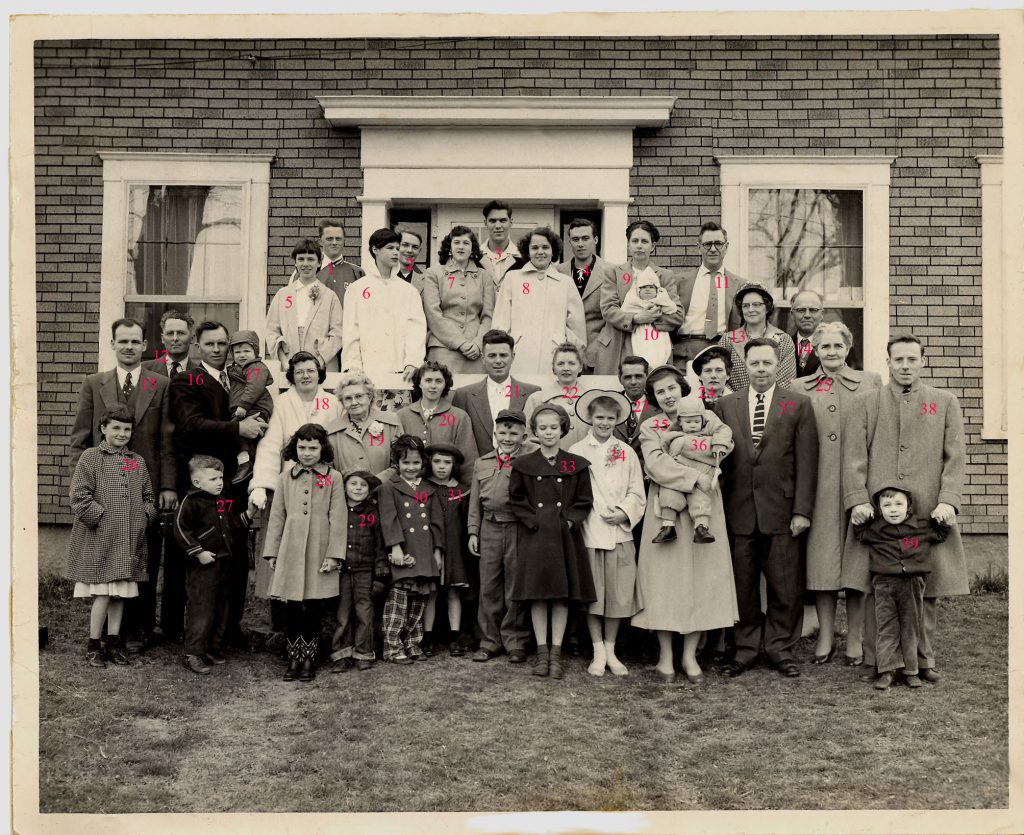
April 17, 1955 Herrick Reunion at Sam and Lillian Crowell’s, Goodwin Rd Eliot ME
1 Gilbert Burbank….2 Dean Herrick…3 (Bob) Robert Daniel Herrick….4 Roy Herrick….5 JoNancy Crowell…6 Lillian (Ann) Crowell….7 Francis Herrick…8 Donna Herrick
9 Lillian Herrick Crowell..10 Errica Crowell.…11 Gene Stanton…12 John A. Herrick…13 Charlotte Herrick Burbank…14 Perry Burbank…15 Samuel Crowell 3rd…16 Ted Herrick
17 Donald Herrick…18 Barbara Herrick…19 Lillian Iola Weymouth Herrick...20 Shirley Herrick Wynn…21 Wesley Wynn…22 Prudence Herrick Stanton…23 Arland Herrick
24 Sue Herrick…25 FlorenceHerrick…26 Susan Barbara Herrick …27 David Herrick…28 Geneva…29 Samuel Crowell 4th (Bo)…30 Deborah Crowell..31 Patricia (Patty) Wynn
32 John Locke Herrick…33 Shirley (Sunny) Wynne…34 Marcia Crowell…35 Elizabeth Ann Audie…36 Peter Audie…37 Irving Herrick…38 Red Audie…39 Mark Audie
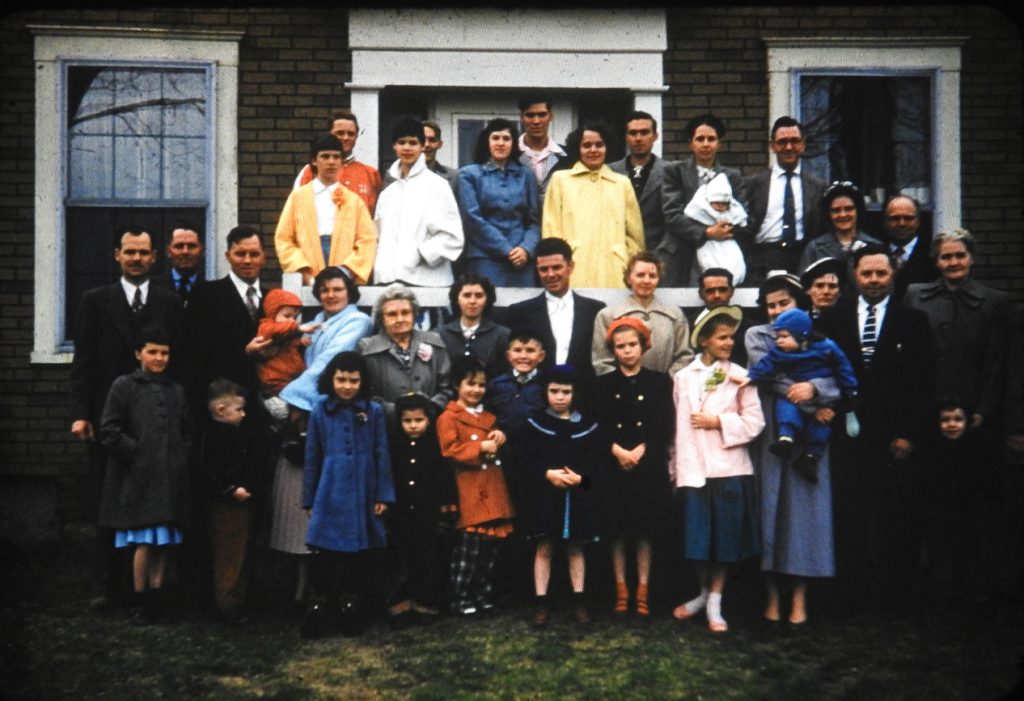
1970
- Tracey McVetty
- Michael McVetty
- Amy Rachel Herrick (39)
- Jim Herrick(39)
- Michelle Herrick
- Heather (Herrick) Livingstone
1980
- Courtney Herrick(39)
- Trevor Herrick (39)
- Justin Herrick (39)
- Adam Herrick (39)
- Tyler Herrick (39)
- Stephanie Herrick (39)
- Stephen Herrick (39)
- Tammy McVetty
1990
- Michaela McVetty (40)
- Molly Lynn McVetty(40)
- Caleb Herrick (40)
- Corbin Alan Herrick (40)
2000
- Sarah Grace Baker (40)
- Payton David Livingstone(40)
- Christian Adam Herrick(40)
- Georgia Grace Livingstone(40)
2010
2020
Partial List:
Old URL’s
New URL’s
Herrick Genealogy
Name…………………..URL…………………………Generation
Locke Genealogy
Ancestry of the BUTT’s
Ancestors on my mother’s side:
Barbara Butt b1925 Marblehead, MA (105b) my mother
Henry Archibald Butt b1900 Marblehead, MA (104b) my grandfather
Henry James Butt b1876 came to US (103b) my great grandfather
James Butt b1856 Isle of Wight, England (102b) my great great grandfather
James Butt b1830 Winchester, England (101b) my great great great grandfather
Joseph Butt B1811 (100b)
James Butt B1766 (99b)
Anglo-Saxon Rulers
In the Anglo-Saxon period, England was divided into small kingdoms. They are known as the Heptarchy (lit ‘rule of seven’) as there were usually seven of them although the number varied occasionally due to amalgamations and divisions. They formed a loose confederation under a single king, the most powerful amongst them who was acknowledged as head king or bretwalda and were eventually united under the kings of Wessex.
Bretwaldas (Head Kings) (According to Bede + later historians)
| Name | Kingdom |
| Aelle | Sussex |
| Ceawlin | Wessex |
| Aethelbert I | Kent |
| Redwald | East Anglia |
| Edwin | Northumbria |
| Oswald | Northumbria |
| Oswy | Northumbria |
| Offa | Mercia |
| Egbert | Wessex |
Northumbria and Bernicia
The kingdom of Northumbria, the most northern of the Saxon Heptarchy, was formed when Bernicia and Deira were united. Its most powerful period was during the C7th under Edwin, Oswald and Oswy but it declined after the latter’s death and became part of the Viking kingdom of York after the last recorded king, Egbert II, died around 878.
Kings
| Ida of Bernicia | 547-59 | Bearnoch | |
| Glappa | 559-60 | Son of Ida | |
| Adda | 560-8 | ” | |
| Aethelric | 568-72 | ” | |
| Theodric | 572-9 | ” | |
| Frithuwald | 579-85/6 | ” | |
| Hussa | 585/6-92/3 | ” | |
| Aethelfrith | 593-616 | son of Aethelric | 1 Bebba 2 Acha daughter of Aelle of Deira 3 ? |
| Edwin | 616-33 | Son of Aelle of Deira | Aethelburh daughter of Aethelbehrt I Kent |
| Eanfrith | 633-4 | Son of Aethelfrith + 1 | Pictish princess |
| St Oswald | 634-41 | son of Aethelfrith + 2 | Cyneburg, daughter of Cynegils of Wessex |
| Oswy | 641-70 | Son of Aethelfrith + 3 | 1 Rhiainfellt of Rheged (Riemmelth) 2 Eanfled of Deira 3 Fina (mistress) |
| Aethelwald | c 651-4 Bernicia | nephew of Eanfrith | |
| Ecgfrith | 670-85 | Son of Oswy + 2 | 1 Aethelthryth (Etheldreda) d of Anna of East Anglia 2 Eormenburg |
| Aldfrith | 685-704 | Son of Oswy + 3 | Cuthburh, sister of Ine of Wessex |
| Osred I | 704-16 | Son of Aldfrith | |
| Coenred | 716-8 | son of Cuthwine, descendant of Ida | |
| Osric | 718-29 | Gs of Oswy | |
| Ceolwulf | 729-37 d 760, a monk | brother of Coenred | |
| Eadbehrt | 737-58 d 768 | cousin of Ceolwulf | |
| Oswulf | 758-9 | son of Eadbehrt | Ricthryth |
| Aethelwald Moll | 759-65 | Aethelthryth | |
| Alchred | 765-74 | Desc of Ida of Bernicia | Osgyfu d of Oswulf |
| Aethelred I | 774-778/9 | 2 Aelfflaed, daughter of Offa of Mercia | |
| Aelfwald I | 778/9-88 | son of Oswulf | |
| Osred II | 788-92 | son of Alhred | |
| Egbert II | 876-8 |
Earls
| Ragnald | c 919 | ||
| Edgar | 957 + Eng, Mercia | 1 Aethelflead 2 Wulfthryth 3 Aelfthryth of Devon | |
| Thored | c 970 | ||
| Waltheof | -1006 beyond Tees | ||
| Uhtred | 1006-16 | son of Waltheof | 1 Ecgthryth of Durham 2 Sigen 3 Aelfgifu, daughter of Eththelred II of England |
| Eadwulf | 1016 beyond Tees | son of Waltheof | |
| Aldred | -1038 | son of Uhtred (1st m) | |
| Eadwulf | 1038-41 beyond Tees | son of Uhtred (1st m) | |
| Siward | 1041-55 | Aelfflaed, daughter of Aldred | |
| Earl Tostig | dep 1065 | brother of Harold II of England | Judith, daughter of Baldwin IV of Flanders |
| Morcar | 1065-6 dep | son of Aelfgar of Mercia | |
| Gospatric | 1068 + Dunbar | grandson of Uhtred | |
| Oswulf | 1068 beyond Tees | son of Eadwulf | |
| Waltheof | 1072-6 (+ H’don) | son of Siward | Judith, neice of William I of England |
Deira
| Yffe/Yffi | -560 | ||
| Aelle/Aelli | 560-88 | son of Yffe | |
| Edwin | Son of Aelle | 1 Cwenburg of Mercia 2 Ethelburga of Kent | |
| Osric | 632-3 | son of Aelfric, Aelle’s brother | |
| Oswine | 644-killed 651 | son of Osric | |
| Ethelwald of Bernicia | 651-654 annexed to Bernicia | Son of St Oswald | |
| Ahlfrith | 54-664 sub king | son of Oswy of Northumbria | |
| Aelfwine | killed 679 sub-king | brother Ahlfrith |
Essex
This kingdom of the Heptarchy was founded about 527 and annexed to Wessex in 825.
| Aescwine | C527-87 | ||
| Sledda | C587-pre604 | Son of A | Ricula d of Eormenric of Kent |
| Saebert | Pre 604-616/7 | Son of Sledda | |
| Saexred Saeward Name unknown | 616/7 | 3 sons of Saebert | |
| Sigebehrt I ‘the Little’ | 617-pre653 | Son of Saeward | |
| Sigebehrt II ‘the Good’ | 653-60 | Son of Sexbald bro of Saebert | |
| Swithhelm | 660-5 | Bro of Sigebehrt II | |
| Sebbi + Sighere | 665-95 665-83 | Bro of Sigebehrt I Son of Sigebehrt I | St Osyth, dau Frithwold, sub-king of Surrey |
| Sigeheard + Swaefred | c695-pre709 | Sons of Sebbi | |
| Offa | c 709 abd to be monk | Son of Sighere | Cyneswith, daughter of Penda of Mercia |
| Saelred | 709-46 | Son (gs/ggs?) of Sigebehrt II | |
| Swithred | 746-758+ | S of Sigemund, s of Sigeheard | |
| Sigeric | 758+-798 | Son of Saelred | |
| Sigered | 798-825 submitted to Egbert of Wessex |
Mercia
This kingdom in central England between Northumbria and Wessex was founded c 585. It declined after the death of Offa in 796 and was eventually absorbed by Wessex. In 873, King Burhred was driven out by the Danes who settled in East Mercia in 877, leaving West Mercia to Ceolwulf, their puppet king. His reign ended about 883 and Ealdorman Ethelred acknowledged Alfred the Great of Wessex as overlord.
| Creoda | C585-93 | ||
| Pybba | 593-c606 | Son of Creoda | |
| Ceorl | Kinsman of P | ||
| Penda | 632-54 | son of Pybba | Cynewise |
| Peada | 654-6 + Mid Ang | son of Penda | Alhflead, daughter of Oswy of Northumbria |
| Wulfhere | 657-74 | Son of Penda | Eormenhild/Eormengild d E’behrt of Kent |
| Aethelred | 675-704 | Osthryth/Osthryd d Oswy N’bria | |
| Merewala | c 700 East Mercia | Eormenburh d E’raed of Kent | |
| Coenred | 704-9 abd to be monk | son of Wulfhere | |
| Ceolred | 709-16 | son of Aethelred | Waerburh/Werburg/Werburga |
| Ethelbald | 716-57 | Ggs of Pybba | |
| Beornred | 757 | ||
| Offa | 757-96 | Descended from Eawa, son of Pybba | Cynethryth |
| Ecgfrith | 796 | son of Offa | |
| Coenwulf | 796-821 | Descended from Cenwalh, son of Pybba | Aelfthryth |
| Ceolwulf I | 821-after 823 | Brother of Coenwulf | |
| Wiglaf | 827-40 | Aelflead, daughter of Ceolwulf I | |
| Beorhtwulf | 840-52 | ||
| Burgred/Burhred | 852- | Aethelswith, sister of Alfred the Great | |
| Ceolwulf II | 873-c83 |
Earls
| Edgar | b: abt 900 | (in 957 became an English Nobel | |
| Edulf de Devon | b: 921 | ||
| Leofwine | -c 1023 | Ealdorman of Hwicce | |
| Leofric | c 1023-57 earl of M | son of Leofwine | Godgifu (Lady Godiva) |
| Aelfgar | 1051-7-65 + E Ang | son of Leofric | Aelfgifu |
| Edwin | 1065-6 d 1071 | son of Aelfgar | |
East Anglia
The kings of the East Angles were called the Wuffings after Wuffa who probably founded the kingdom. His grandson Redwald is probably the man buried at Sutton Hoo in Suffolk. The last king was St Edmund who was killed by the Danes in 869.
| Wuffa | 571-8 | ||
| Tytila | 578-93 | Son of Wuffa | |
| Redwald | 593-617 | Son of Tytila | |
| Earpwald | 617-627/8 | Son of Redwald | |
| Sigeberht | 631-4 abd to be monk | Stepson of Redwald | |
| Ecgric | 634-5 | Kinsman of Sigebehrt | |
| Anna | C635-654 | Son of Eni bro of Redwald | Saewara |
| Aethelhere (Aethelric?) | 654 | Bro of Anna | Hereswith, ggd of Aelle of Deira; sister of Hilda of Whitby |
| Aethelwold | 654-663/4 | Bro of Anna | |
| Ealdwulf (Aldwulf) | 663-713 | Son of Aethelhere/ric | |
| Aelfwold (Alfwold) | 713-49 | Son (or bro) of Ealdwulf | |
| St Edmund | 855-69/70 |
Earls
| Ulfcytel | c 1000 | Wulfhild, daughter of Eththelred the Unready | |
| Harold | 1045 + England and Mercia | son of Godwin of Wessex | Ealdgyth, daughter of Aelfgar of Mercia |
| Gyrth | 1057-66 died at Hastings | brother of Harold |
Kent
Before about 449, the founder of the kingdom, Hengest, and his brother, Horsa, were invited to come from Jutland to help the British king, Vortigern, defend himself against the Picts and Scots. The ruling family were called ‘Oiscings’ after Hengest’s son, Oeric Oisc.
| Hengest | 455-88 | Son of Wihtgils | |
| Aesc (Oeric Oisc) | 488-512 | Son of Hengest | |
| Octa | 512-40 | Son of Aesc | |
| Eormenric | 540-60 | Son of Octa | |
| Aethelbehrt I | 560-616 | Son of Eormenric | Bertha, daughter of Caribert I, King of Paris? 2 name unknown |
| Eadbald | 616-40 | son of Aethelbert I | 1 stepmother ‘?’ 2 Emma (Ymme) d of Clothacar (Clotaire) King of the Franks |
| Eorcenberht | 640-64 | Younger son of Eadbald | Seaxburh d Anna of East Anglia |
| Eormenraed | joint king? | Elder son of Eadbald | Oslafa/Oslava |
| Egbert I | 664-73 | son of Eorcenbehrt | |
| Hlothhere Swaebhard | 673-85 676-92 | son of Eorcenbehrt son of Sebbi of Essex | |
| Eadric | 674-86 joint king | son of Egbert | |
| Oswini | 688-9 joint king | ||
| Wihtred | 690-725 | son of Egbert | 1 Cynegyth 2 Ethelburga 3 Werberga |
| Aethelbehrt II Eadbehrt II Alric | 725-62 725-48 725- | Son of Wihtred + 1 ” Son of Wihtred + 3 | |
| Eardwulf | c 747-jointly | Son of Eadbehrt I | |
| Egbert II | 765-80 | Son of Aethelbehrt II | |
| Ealhmund | Fl 784/6 sub king | Son of Eafa of Wessex | Dau of Aethelbert II? |
| Eadbehrt II Praen | 796-8 | Son of Aethelbehrt II | |
| Cuthred | 798-807 | bro of Coenwulf + CeolwulfI of Mercia | |
| Baldred | -825 driven out by E III | ||
| Egbert III | 825-39 (also Wessex + England) | Son of Ealhmund | Raedburh/Redburga |
| Aethelstan | 839-51 sub-king + Essex, Surrey, Sussex | Son or gs of Egbert III Bro (or uncle) of Alfred the Great |
Wessex
The kingdom of the West Saxons, founded by Cerdic, expanded to cover most of southern England during the C6th and 7th. Under Egbert (802-39) it also gained control of Northumbria and Mercia. The later kings are also credited as the first kings of all England but Wessex declined after the death of Edgar in 975 and the throne was later lost to Danish invaders.
| Cerdic | 519-34 | Came to Britain c 495 | – |
| Creoda | Son of Cerdic | – | |
| Cynric | d 560 | son of Creoda or Cerdic | – |
| Ceawlin | 560-92 | son of Cynric | – |
| Ceol | 591-7 | son of Cutha, brother of Ceawlin | – |
| Ceolwulf | 597-611 | brother of Ceol | – |
| Cynegils | 611-41 | son of Ceolwulf or Ceol | – |
| Coenbehrt | d 661 sub king | grandson of Ceawlin | |
| Cenwalh | 641-72 | son of Cynegils | Dau Pybba of Mercia 2? Seaxburh |
| Seaxburh/Sexburga | 672-3/4 | Widow of Cenwalh | |
| Cenfus | 673/4 | Son of Cenferth s of Cuthgils, s of Ceolwulf | |
| Aescwine | 674-6 | Son of Cenfus | |
| Centwine | 676-85 | Bro of Cenwalh | |
| Caedwalla | 685-8 abd to go to Rome as pilgrim | son of Coenbehrt | Centhryth |
| Ine | 688-726 abd to go to Rome as pilgrim | son of Cenred, desc of Ceawlin | Ethelburga |
| Ethelheard | 726-40 | Bro of Ethelburga Desc of Cerdic | Frithugyth |
| Cuthred | 740-56 | Claimed desc from Cerdic (maybe bro of E) | |
| Sigebehrt | 756-7 dep | ” | |
| Cynewulf | 757-86 | ” | |
| Beohrtric | 786-802 | Bro of Cynewulf? | Eadburh, daughter of Offa of Mercia |
| Egbert | 802-39 + England | Son of Ealhmund, sub-king in Kent | Redburga |
| Earl Godwine | 1018-53 | Father of Harold II of England | Gytha, daughter of Jarl Thorgils |
England
The kings of Wessex became overlords of all the Saxon kingdoms and were later recognized as kings of all England with the other kingdoms remaining as earldoms. Princes of the royal family were called ‘Athelings’ because they descended from Aethelwulf.
| Aethelwulf | 839-58 (England) | Son of Egbert | 1 Osburga d of Oslac 2 Judith d of Charles the Bald King of The Franks |
| Aethelbald | 858-60 | 1st s of Aethelwulf + 1 | Judith, his stepmother |
| Aethelbehrt | 860-5 | 2nd s of Aethelwulf + 1 | |
| Aethelred I | 865-71 | 3rd s of Aethelwulf + 1 | Wulfthryth |
| Alfred the Great | 871-99 | Son of Aethelwulf + 1 | Ealhswith d Ethelred Mucil of the Gaini (Mercia) |
| Edward the Elder | 899-924 | son of Alfred the Great | 1 Ecgwynn/Egwina 2 Aelflead/Elfleda 3 Eadgifu |
| Athelstan | 924-39 | son of Edward + 1 | dnm |
| Edmund I ‘the Magnificent’ | 939-46 | son of Edward + 3 | 1 Aelfgifu (St Elfgiva) 2 Aethelflead of Darmerham |
| Eadred | 946-55 | son of Edward + 3 | Dnm |
| Eadwig/Edwy | 955-59 | son of Edmund I + 1 | Aelfgifu, his cousin (illegal) |
| Edgar ‘the Peaceful’ | 959-75 | son of Edmund I + 1 | 1Aethelflead/Ethelfleda d Ordmaer 2Wulfthryth/Wulfthrith 3 Aelfthryth/Elfrida d of Ordgar of Devon |
| Edward the Martyr | 975-78 | son of Edgar + 1 | – |
| Ethelred II the Unready (Redeless – ‘lacking counsel’) | 978-1016 | son of Edgar + 2 | 1 Aelflead (Elfgiva?) of Northumbria 2 Emma dau Richard I of Normandy |
| Edmund II Ironside | 1016 | son of Ethelred + 1 | Ealdgyth/Edith, widow of Sigeferth s of Earngrim |
| Canute (Cnut) the Dane | 1017-35 | son of Sweyn Forkbeard | 1 Alfgifu of Northampton 2 Emma of Normandy |
| Harold I Harefoot | 1035-40 | 2nd son of Canute + 1 | dnm |
| Hardicanute (Harthacnut) | 1040-42 | Son of Canute + 2 | Dnm |
| Edward the Confessor | 1042-66 | 2nd s of Ethelred II + 2 | Edith, sis of Harold II |
| Harold II | 1066 defeated at Hastings by William the Conqueror | 2nd son of Godwin of Wessex | Ealdgyth d Alfgar of Mercia Eadgyth Swan-neck |

